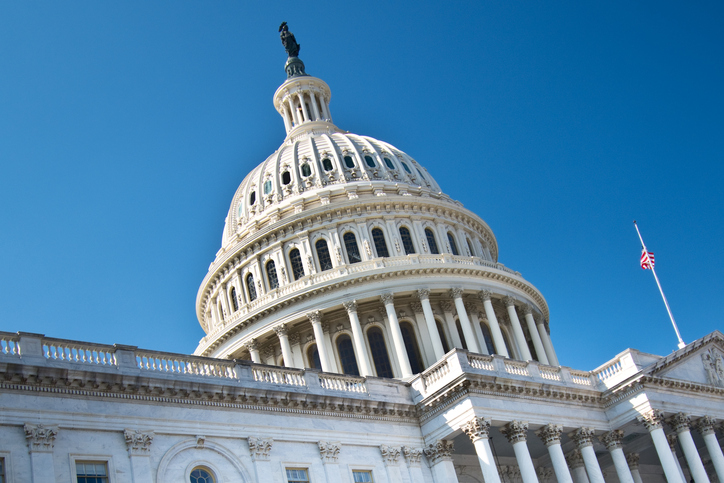
 Academic Pandemic
Academic PandemicPresident Biden formally addressed the U.S. Congress and the nation on Wednesday evening, laying out his administration's agenda and the accomplishments of his first 100 days in office. A common theme throughout his speech was preparing the U.S. for competition with China, which he argued is needed to "win the 21st century." He noted that China's President Xi is "deadly earnest about [China] becoming the most significant, consequential nation in the world."
Beyond the rivalry, Biden said he "welcomes" healthy competition with China, and that the U.S. is not "looking for conflict."
One potential area of collaboration is in education. Biden announced this week an easing of the Trump administration's restrictions on students from China and other countries entering the U.S. during the pandemic. These and other highly criticized Trump-era bans disrupted a broad range of academic programs between China and the U.S., including the Fulbright Program. Students from China make up just over a third of the international scholars in the country.
For more, watch our interview with Casper Lant on his canceled Fulbright scholarship to China, or read his article Why We Need a Fulbright China Program.
 Population Sensation
Population SensationThe results from both the U.S. and China's 2020 censuses have already begun to trickle out. The People's Republic of China National Bureau of Statistics released a one-sentence statement on Thursday claiming that China's population increased in 2020, following other reports saying that China's population will decrease for the first time in decades. The U.S. population, meanwhile, grew at the slowest pace since the 1930s.
In recent years, China's aging population has become the cause of much concern. An aging population brings a variety of social and economic constraints, such as a shortage of an able-bodied workforce that may dampen China's ability to continue its historic economic growth of the last several decades.
Some Chinese economists predict that its population could continue to grow and that rates over the last decade were overestimated. But, some experts say that if the population does start to decline, Beijing may have to take additional measures, such as rapidly raising the retirement age and ending all birth restrictions.
 One Big Step for Xi
One Big Step for XiOn Thursday, China commenced the construction of its first permanent space station— with the launch of the station's core module serving as the latest advancement in the country's growing space ambitions. The module, called Tianhe, or "Heavenly Harmony," blasted into earth orbit from the Wenchang Launch Center on the southern island of Hainan.
President Xi Jinping said that the launch marks "an important leading project for constructing a powerful country in science and technology and aerospace." He also noted that it furthers the three-step strategy of building up China's manned space program.
China's space exploration program has continued to expand over the last several years. In December, the Chinese Chang'e 5 probe was the first expedition since the 1970's to bring lunar rocks back to Earth. China is set to land the world's second probe on Mars in the coming weeks and plans to launch 11 missions to finalize the station by the end of 2022, complete with a docking port and connection with a Chinese space satellite.
Some experts also say this could signal the end of the international space cooperation era, with Russia also claiming they will leave the ISS to begin building their own space station in 2025. China's astronauts have long been excluded from the International Space Station, which has been the only venue for continuous human presence in space for years.
For more, read Phillip Cunningham's article on space, diplomacy, and China's 2020 moon landing—A Quick, Brown Fox Spots a Load of Moonrocks.
Prepared by China-US Focus editorial teams in Hong Kong and New York, this weekly newsletter offers you snap shots of latest trends and developments emerging from China every week, while adding a dose of historical perspective.
- 2021-04-23 Carbon Cutting
- 2021-04-16 A Hopeful Climate
- 2021-04-09 Technological Frontiers
- 2021-04-02 Back to Basics
- 2021-03-26 The Biden Era
- 2021-03-19 “A Strong Smell of Gunpowder and Drama”
- 2021-03-12 Bridging the Divide
- 2021-03-05 A Tale of Two AI Superpowers
- 2021-02-26 Changing of the Guard
- 2021-02-20 Collective Approaches
- 2021-02-13 Hopes for a Bullish Year
- 2021-02-05 “The Most Serious Competitor”
- 2021-01-29 Looking Towards Multilateralism
- 2021-01-22 Biden’s China Path
- 2021-01-16 Becoming a "Technological Superpower"
- 2021-01-08 Capital Chaos
- 2020-12-18 All Eyes on 2021
- 2020-12-12 Midwest to Middle Kingdom?
- 2020-12-04 Shifting Winds
